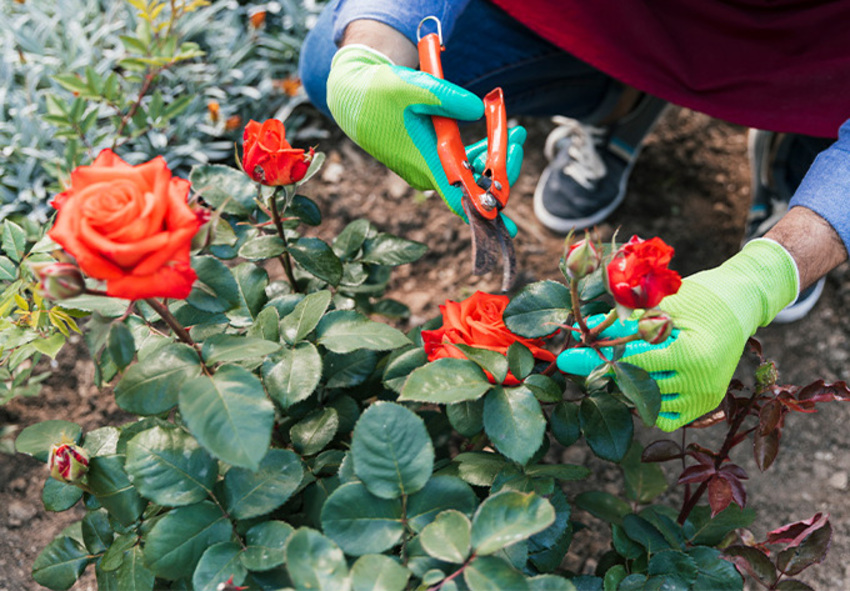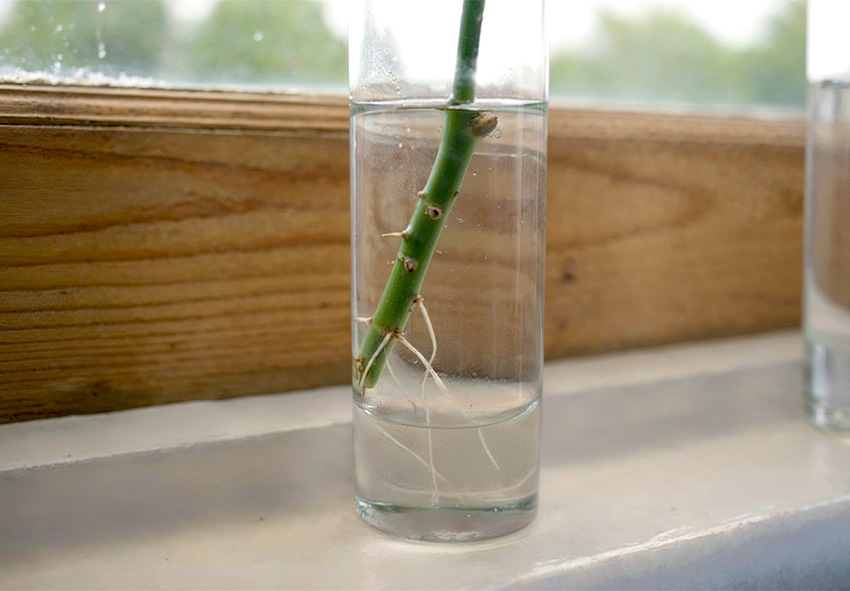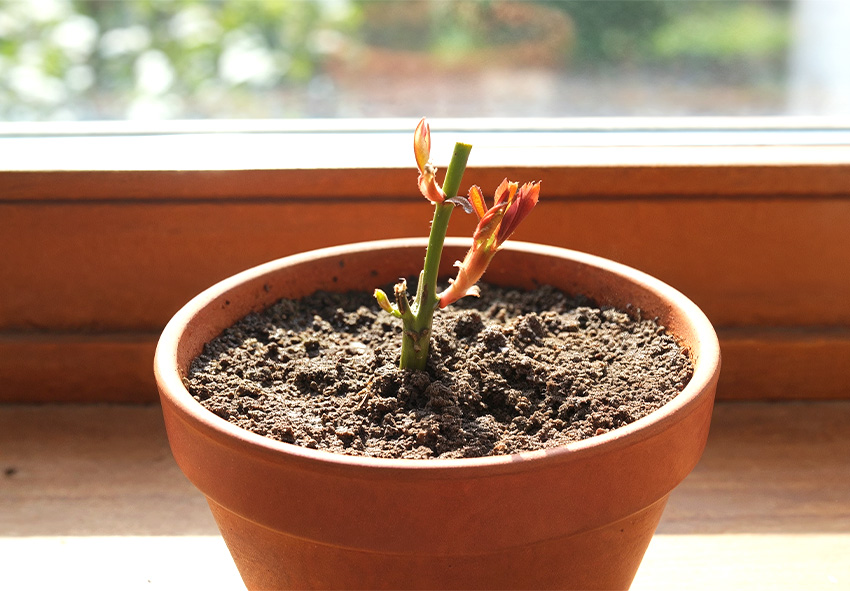Roses are among the most beloved garden flowers, admired for their beauty, fragrance, and symbolism. Instead of purchasing new plants each season, many gardeners explore rose propagation as a rewarding way to expand their collection. Whether through cuttings, layering, or grafting, propagating roses helps preserve favorite varieties while reducing costs. Our gardening blog is a perfect place to find all the information you need!
Understanding Rose Propagation

Before diving into methods, it’s important to understand the basics of rose propagation. This knowledge will help you choose the best approach for your garden and ensure healthy, thriving plants.
What is rose propagation?
Rose propagation is the process of creating new rose plants from existing ones. By using parts of a parent plant — such as stems, seeds, or roots — you can successfully grow healthy, genetically identical roses. This technique ensures consistency in bloom color, shape, and fragrance.
Why propagate roses instead of buying new plants?
Propagating roses allows gardeners to save money while preserving cherished varieties that may be hard to find in nurseries. It also provides the satisfaction of nurturing a plant from the very beginning. Gardeners who master how to propagate roses can quickly fill their beds with vibrant blooms.
Best time of year to propagate roses
The ideal time for propagating rose cuttings is late spring through early summer, when stems are semi-ripe and actively growing. Layering and grafting are also best done during this active growth period. For those working with seeds, autumn is the right time to collect and prepare them for stratification.
Popular Rose Propagation Methods
There are several methods to propagate roses, each with unique benefits and challenges. Choosing the right technique depends on your gardening skills, available tools, and the type of rose you wish to grow.
Propagating roses from cuttings
One of the most common methods, propagating rose cuttings, involves selecting a healthy stem, trimming it to the right size, and encouraging it to root in soil or water. This method is beginner-friendly and usually has a high success rate. With patience, cuttings develop roots within a few weeks.
Layering technique for roses
Layering is another reliable propagation technique. In simple layering, a flexible stem is bent to the ground, covered with soil, and allowed to develop roots while still attached to the mother plant. Air layering involves wrapping a cut section with moist moss until roots appear. Both methods work well for shrub roses.
Grafting roses
Grafting is a more advanced method, often used by commercial growers. It involves attaching a cutting of a desired rose variety to a hardy rootstock. This technique combines the beauty of one rose with the strength and disease resistance of another. While effective, it requires skill and practice.
Growing roses from seeds
Though less common, growing roses from seeds can be rewarding. After collecting seeds from rose hips, they must undergo stratification, a cold treatment that simulates winter. Germination can take months, and seedlings often differ from the parent plant, making this method more suitable for hybrid development.
Step-by-Step Guide: Propagating Rose Cuttings

If you’re new to propagation, starting with cuttings is the easiest and most reliable way. Below is a clear step-by-step process that will help you root cuttings successfully and grow strong rose plants:
- Choosing the right stem: Select a healthy, disease-free stem that has just finished flowering. Semi-hardwood stems are ideal, as they’re strong enough to survive but still flexible for rooting.
- Preparing the cutting: Cut a 6–8 inch section below a leaf node, removing flowers and excess leaves. Dip the base in rooting hormone to encourage root growth and prevent rot.
- Rooting medium and containers: Use a well-draining medium such as perlite, sand, or a mix of potting soil and compost. Plant the cutting in a small pot, ensuring at least two nodes are buried.
- Encouraging root development: Cover the pot with a clear plastic bag to maintain humidity. Place it in bright, indirect light and keep the soil slightly moist. Roots typically form within 4–6 weeks.
- Transplanting to the garden: Once the cutting has a strong root system, harden it off by gradually introducing it to outdoor conditions. Transplant it into the garden in fertile, well-drained soil.
Care Tips for Newly Propagated Roses
Proper aftercare is essential to ensure the survival and growth of newly propagated roses. With the right attention, these young plants can quickly establish themselves and produce beautiful blooms. For more useful tips, check out our care guide for roses.
Watering and light needs
Young roses need consistent moisture but should never sit in waterlogged soil. Provide at least 6 hours of sunlight daily to encourage strong growth.
Protecting young roses from pests and diseases
Newly propagated plants are more vulnerable to pests like aphids and diseases like powdery mildew. Regular inspection and gentle treatment with insecticidal soap or neem oil can help.
Fertilizing and pruning practices
Begin fertilizing lightly once the new plant shows active growth. Prune sparingly during the first year, focusing on removing dead or weak stems.
Common Mistakes to Avoid in Rose Propagation

Many beginners face challenges when propagating roses, but most mistakes are easy to fix with the right knowledge. Avoiding these common errors will greatly improve your success rate:
- Using weak or diseased stems: Always choose healthy stems from a vigorous parent plant. Using diseased or weak cuttings significantly lowers the chances of success.
- Overwatering and poor drainage: Too much water can cause rot before roots have a chance to develop. Ensure containers and garden soil have excellent drainage.
- Skipping sterilization of tools: Dirty tools spread bacteria and fungi that harm cuttings. Always sterilize pruning shears and knives before use to protect your plants.
Conclusion
Rose propagation is a simple yet rewarding practice that allows gardeners to expand their collection without additional costs. From rose propagation techniques like cuttings and layering to advanced methods such as grafting, there’s an option for every skill level. With patience, proper care, and attention to detail, anyone can learn how to propagate roses successfull!
Frequently Asked Questions (FAQs) about Rose Propagation
1. What is the easiest method for propagating roses at home?
The easiest method is propagating roses from cuttings. It requires selecting a healthy stem, trimming it, and placing it in a rooting medium until new roots form. This method is beginner-friendly, affordable, and usually delivers good results when proper care—like humidity and indirect light—is provided.
2. When is the best time to propagate roses?
The best time to propagate roses is late spring through early summer, when stems are semi-ripe and actively growing. At this stage, the cuttings are strong enough to develop roots but still flexible. Fall can also work for layering, while seeds are best prepared in autumn for stratification.
3. How can I order Holland roses from your online store?
Ordering roses from our online store Dutch-bulbs.com is simple and convenient. Visit our website and browse our selection of rose varieties, including those sourced from Holland for their exceptional quality and beauty. Our team will carefully pack and ship your Holland rose bulbs, ensuring they arrive fresh and ready for planting.
4. Can all rose varieties be propagated from cuttings?
Most rose varieties can be propagated from cuttings, especially shrub roses, climbing roses, and floribundas. However, some hybrid tea roses may be more challenging and are often propagated through grafting. While success rates vary, experimenting with cuttings is a great way to multiply many garden favorites.
5. How do I care for newly propagated roses?
Newly propagated roses need consistent moisture, at least six hours of sunlight daily, and protection from pests. Fertilize lightly once active growth appears and prune only weak or damaged stems. With proper care, young roses will establish strong roots and start blooming within a season or two.
Published: 14.10.2025
